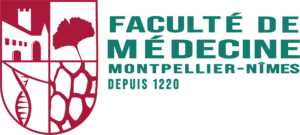PSYCHOMOTRICITY STUDIES
Future students, find out more about studying Psychomotricity at our Faculty: admissions, content, reorientation, job opportunities...
Future students, find out more about studying Psychomotricity at our Faculty: admissions, content, reorientation, job opportunities...
PARAMEDICAL STUDIES
Access to psychomotricity studies is after the baccalaureate.
Prospective students must have applied for this course via the Parcoursup platform.
Access to this course is subject to a selection based on the application file and the expectations specified on the platform.
They must hold a baccalauréat, a DAEU, a French or foreign diploma exempting them from the baccalauréat, or a qualification or experience deemed sufficient in accordance with article L613-5 of the French Education Code.
At theUniversity of Montpellier, it is possible to enroll in psychomotricity and take all the courses corresponding to this year of training at the Faculty of Medicine(Campus Santé Arnaud de Villeneuve in Montpellier).
Psychomotricity studies take 3 years.
Training is spread over 6 semesters. The modules taught include :
- cross-disciplinary fields in the form of lectures: psychiatry, psychology, anatomy, paediatrics, pedagogy, pharmacology, physiology, medical pathologies, public health
- courses more directly related to psychomotricity: theoretical, theoretical-clinical and practical psychomotricity modules. Internships in institutions or private practice with practicing psychomotricians complement the theoretical and practical aspects of the program, ensuring that students receive a quality, alternating training program for their professional integration. The course content is broken down into the 3 years of the curriculum.
First year: semesters 1 and 2
The objective of the first year, in addition to the acquisition of the fundamental bases in each discipline, is oriented towards the functioning of the normal subject at all stages of life. The first elements of pathology are evoked and therapeutic tools are schematically presented.
Second year: semesters 3 and 4
The second year is an introduction to clinical methods of assessment and care. Internships enable students to accompany a professional in his or her interventions, both with children or adolescents and with other professionals on the multidisciplinary team.
Third year: semesters 5 and 6
The third year focuses on the professionalization process. The psychomotor care of adults and the elderly is explored in greater depth. During internships, students gain first-hand experience of their knowledge, know-how and therapeutic tools. Teaching is geared to professional realities, with clinical case studies, therapeutic projects and summaries.
The possibility of continuing studies at Master's and then Doctorate level is currently being examined as part of the process of reengineering the training leading to the State Diploma.
Psychomotricians can work in private practice, as salaried employees in the public sector (e.g., hospital departments) or the private sector (e.g., clinics, rehabilitation institutes), or in a combination of private practice and salaried employment. With an ever-increasing student quota, and job-training tensions evident in several regions, including Occitanie, the psychomotrician profession is one for the future. Numerous national plans support the profession's relevance: Alzheimer's plan, autism plan, psychiatry plan, early childhood plan, etc. Logically, professional integration is judged to be excellent: in some regions, 80 to 90% of young graduates find a job within a year of obtaining their State Diploma.
Psychomotricians are healthcare professionals who work with children, adults and the elderly who have perceptual-motor integration difficulties that compromise their ability to adapt.
Psychomotricians are primarily interested in intentional movement and its constant interaction with the perceptive, psycho-affective, cognitive, motivational and motor spheres. They are, in fact, professionals of action. Through specific perceptual-motor exercises and training, they aim to reduce or even eliminate psychomotor disorders.
EVERYTHING YOU NEED TO KNOW ABOUT THE PROFESSION OF PSYCHOMOTRICIEN.NE
The psychomotrician is a healthcare professional on a par with physiotherapists, speech therapists and occupational therapists. They work with children and adults who have difficulty adapting to the world because of disturbed perceptual-motor integration. The cause of the deficit may be a psychomotor disorder per se, or a broader picture in which the perceptual-motor difficulty is only part of the maladjustment.
Psychomotricians work with people of different ages throughout their lives, providing screening, diagnosis, prevention, support and rehabilitation. This definition gives the profession a very broad field of action, from the point of view of intervention sites: day nurseries, hospital services, private clinics, medico-social establishments, EHPAD, etc.
The psychomotrician tries to reduce the deficit or even eliminate the psychomotor disorder in question, by means of specific training and exercises. If this is not possible, the psychomotor therapist helps to compensate and integrate the individual, taking into account his or her deficits. Therapy methods are rich and varied. They draw on both fundamental and applied research for any breakthrough that might help the patient. Re-education or psychomotor therapy is one way of restoring the individual's adaptation to the environment through psycho-perceptual-motor learning. It is essentially aimed at psychomotor disorders. It studies both perceptual mechanisms, i.e. how and how effectively the subject extracts from the environment the information relevant to the realization of his/her motor project, and motor behavior itself and its characteristics.
Psychomotor disorders manifest themselves both in the way the subject engages in action and in relationships with others. Psychomotor disorders are neurodevelopmental disorders that affect the subject's perceptual-motor adaptation. Their clinical analysis is based on in-depth referential knowledge of normal development. It requires specific investigations, including psychomotor examination, to apprehend the qualitative and quantitative aspects of the subject's perceptions, representations and actions.
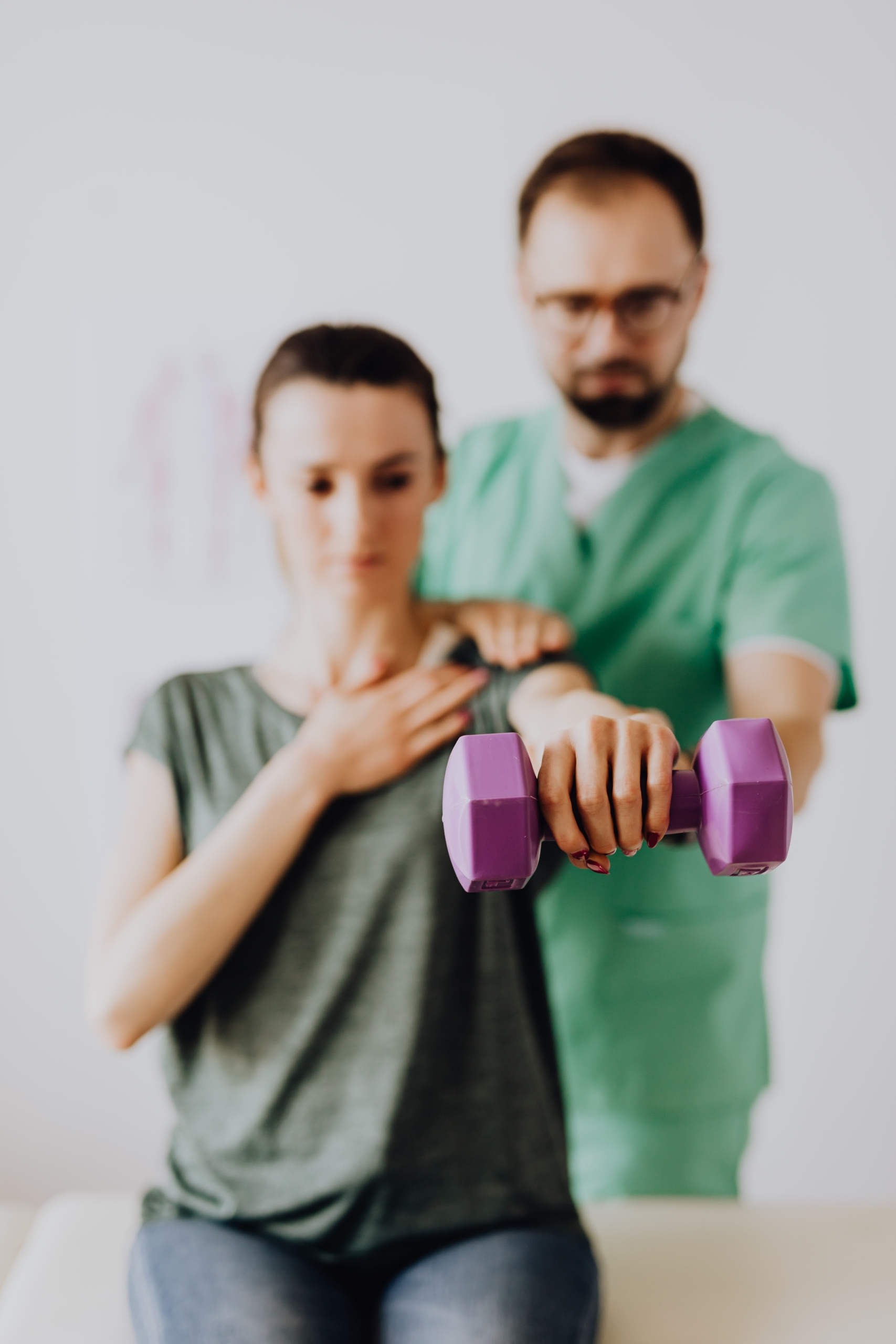
The main psychomotor disorders are :
The characteristics of these disorders are as follows:
In addition to psychomotor disorders in the strict sense of the term, psychomotricians are also interested in the atypical psychomotor manifestations common in neurodevelopmental syndromes (e.g. autism, learning disabilities), psychiatric syndromes (e.g. depression, schizophrenia), neurological syndromes (e.g. post-stroke sequelae), genetic syndromes (e.g. trisomy 21), and neurodegenerative syndromes (e.g. Parkinson's, Alzheimer's). Finally, the question of the relationship between psychological processes and behavior/motricity can be at the heart of the psychomotrician's work, as in the case of patients suffering from anorexia nervosa and/or body image (e.g. dysmorphophobia).
Psychomotor rehabilitation focuses on the subject's actions. As a rule, therapies for psychomotor disorders are multimodal. Therapies are, on the one hand, specific, defined by a strict field of application and therefore related to precise indications, and, on the other hand, act at different levels and are therefore complementary. Psychomotor re-education is adapted to the nature of the symptom: developmental coordination disorders, dysgraphia, attention disorders, hyperactivity, motor tics, non-verbal communication disorders, etc. are not treated by the same means. In addition to psychomotor re-education in the strict sense of the term, multimodality may therefore include chemical therapy and psychotherapeutic intervention, as in the case of tics or attention deficit/hyperactivity disorder. When there are affective and social factors associated with the psychomotor disorder - which is almost always the case - which are sufficiently important, psychomotor therapy should be supplemented by another specific therapy (e.g. psychotherapy).
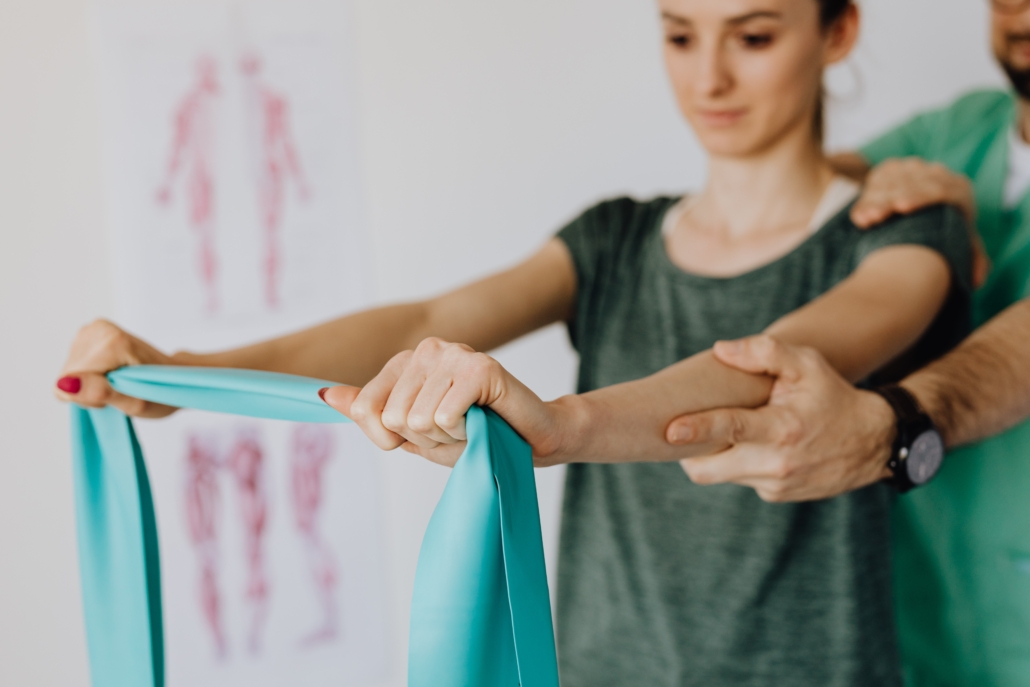
MEDIA COVERAGE OF THE MONTPELLIER PSYCHOMOTRICITY TRAINING INSTITUTE
Head of Psychomotricity
Frédéric Puyjarinet
Head of the Paramedical Studies Office
Ms Mélanie Barachet
Self-guided tours are only available during public opening hours:
SUMMER OPENING HOURS
April 1 to September 30: 12 am to 8 pm except Mondays.
WINTER SCHEDULES
October 1 to March 31: 11 a.m. to 6 p.m. except Mondays.
This form provides us with the information we need to keep track of group attendance at the Jardin des Plantes. It also provides us with the information we need to compile statistics on visitor numbers.
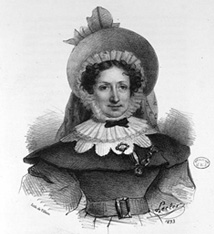
Marie-Anne GILLAIN was born in Montreuil near Versailles in 1773.
She is sent to board with the Visitation nuns.
During the French Revolution, she took refuge in Etampes, with a relative who was Mother Superior of the Hospitalières de l'Hôtel-Dieu.
There, she took lessons from the surgeon and worked for two and a half years, from 1793 to 1796, as a "dame hospitalière", i.e. a laywoman offering her services voluntarily to the poor sick.
In 1797, she returned to Versailles to marry Louis BOIVIN, sous-chef de bureau at the Domaines nationaux.
Soon pregnant, she found herself brutally widowed in 1798, at the age of 25, with no resources and a little girl to raise.
She then decided to make the most of the training she had received from the surgeon at the Hôtel-Dieu d'Étampes, and was admitted to the Maternité midwifery school in 1799.
In 1800, she obtained her diploma and moved to Versailles to be with her daughter and practice her profession.
In 1801, following the death of her daughter, she obtained permission from Marie-Louise Lachapelle to return to the Hospice de la Maternité.
In 1803, she was appointed head supervisor of the nursing section. She held this position for eleven years, until 1814. During this long stay, she took the opportunity to attend classes given by her protector, the Maternity Hospital surgeons (Baudelocque, then Dubois) and the chief physicians (Andry, and above all Chaussier), whose observations and lessons she absorbed.
In 1812, she wrote and published a Mémorial de l'art des accouchements. It was approved by the Ministry of the Interior, which made it one of the manuals given to laureates of the Maternity Hospital.
In 1814, her position as supervisor was abolished and she was dismissed, with a gratuity equivalent to the value of her annual salary, i.e. 360 francs.
In October, she obtained a position as storekeeper and bursar at Poissy General Hospital, which she held until January 1819, when the hospital was converted into a prison.
Little is known about this period of her life: did she continue her obstetric practice despite her new, more administrative duties? Did she do so within the framework of the general hospital? Or in the context of a private practice? In any case, for a time she seemed to enjoy a comfortable salary of 1,200 francs a year, almost as much as the Maternité's master midwife.
In 1818, she competed anonymously for the Prix d'Emulation of the Société de Médecine de Paris, presenting a dissertation on internal hemorrhage of the uterus. She won the medal.
On February1, 1819, she joined the Maison Royale de Santé in Paris as chief midwife supervisor, with the modest salary of 350 francs/year.
In 1821, an opportunity for promotion presented itself when Marie-Louise Lachapelle died.
The General Council of the Hospices must, according to procedure, propose to the Minister of the Interior a list of five candidates to succeed the illustrious midwife.
On November 14, 1821, the Council voted on a list with Marie-Anne Boivin in first place; she obtained 12 votes out of 12 in the first ballot to appoint the first woman.
A month and a half later, the Minister of the Interior endorsed the Council's choice.
But the winner refused the position (or rather resigned), forcing the board to propose another list. Why this refusal? All contemporary biographers explain this decision by the public promise Marie-Anne Boivin made to her former patroness never to replace her, even after her death. If so, she kept her word and another midwife, Madeleine Catherine Legrand, was appointed in 1822.
Marie-Anne Boivin continued to work at the Maison Royale de Santé, where she accumulated observations, publications and awards.
In 1828, she presented a dissertation on spontaneous abortions, which was awarded a prize by the Bordeaux Medical Society.
In September 1835, at the age of 62, worn out and tired, she retired, and urged the hospice board to pay her a pension. Finally, after a first attack that left her hemiplegic, she died in May 1841.
In 1902, one of the rooms in the renovated Maternité was named after Marie-Anne Boivin.
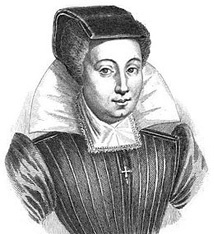
She was born in 1563 on Boulevard Saint Germain or in Mons into a family of doctors.
In 1594, she married Martin BOURSIER, a master surgeon and student of Ambroise PARÉ.
She was left destitute when her husband joined the king's armies.
She soon gained renown among the ladies of the court, and delivered the queen six times.
She is paid 500 crowns for the birth of a boy and 300 for the birth of a girl.
It lost its renown following the death of Marie De BOURBON-MONTPENSIER, wife of Gaston d'ORLÉANS, at the birth of La Grande Mademoiselle.
According to the surgeons who performed the autopsy, the cause of death was placental debris in the uterus, and Louise Bourgeois was accused of negligence.
At the time, male obstetricians were few and far between, and were trying to take over from the midwifery fraternity.
Louise questions their competence by violently criticizing the autopsy findings and the skills of the obstetricians; however, her response has the opposite effect to that intended, by giving them publicity.
She was the first midwife to write a book on obstetrics, Observations diverses sur la stérilité, perte de fruits, fécondité, accouchements et maladies des femmes et enfants nouveau-nés, published in 1609.
In this book, she points out that the couple's sterility can be of male origin, even if, like doctors of the time, she confuses procreative ability with sexual vigor.
She identified the role of malnutrition on fetal health, and was the first to prescribe the administration of iron to treat anemia.
She emphasized the importance of anatomical knowledge for midwives, and begged doctors to allow them to attend lectures and dissection sessions.
In 1636, Parisian midwives petitioned the Faculty of Medicine to allow Louise Bourgeois to teach them obstetrics, but were refused.
However, one of his students, Marguerite du Tertre de la Marche, was later appointed head of midwifery at Hôtel Dieu, and succeeded in overhauling the content of their training.
She died on December 20, 1636 on Boulevard Saint Germain at the age of 73.

He was born on November 30, 1745 in Heilly, Picardy.
He was the son of Jean Baptiste BAUDELOCQUE, surgeon, and Anne Marguerite LEVASSEUR. His brothers Félix Honoré (1744-1794) and Jean Baptiste (1749-1800) were both physicians. He was the third of ten children.
It was his father who introduced him to surgery in rural Picardy.
He completed his studies in Paris at the Hôpital de la Charité, where a renowned obstetrics master, Solayrès de Renhac (1737-1772), officiated.
In 1772, after Solayrès's untimely death at the age of 35, Baudelocque collected the manuscripts of his lectures and took over the teaching of obstetrics at the Hôpital de la Charité. Thanks to Baudelocque, Solayrès' work has escaped oblivion.
In 1775, at the instigation of surgeon Augier du FOT, a childbirth demonstrator in Soissons, he published the first edition of a manual for midwifery training, using manuscripts bequeathed by Solayrès de RENHAC. This work was later published a second time under his own name, under the title " Principes sur l'art des accouchemens par demande et réponses en faveur des élèves sages-femmes". It was republished three times during Baudelocque's lifetime, and three times posthumously.
In 1776, following the defense of his thesis on symphysiotomy " An in partu propter angustiam pelvis impossibili, symphysis ossium secanda?", he was appointed surgeon at the Hôpital de la Charité, Paris, and received the title of Master of Surgery from the Collège de chirurgie de Paris.
On April 5 or 6, 1777 in Paris, he married Andrée DERULLIER (de Vulier, de Voulier, de Rullie, de Rouillier), whose family made mannequins of pregnant women for demonstrations in birthing classes. She died on January 4, 1787, childless.
In 1781 and 1789, he published the first two editions of his learned treatise " L'Art des accouchemens" in two volumes. He became famous for his forceps, his practice of Caesarean section and his invention of the pelvimeter, which measures the external anterior-posterior diameter of the uterus, in order to identify patients who might have difficulty giving birth.
On September 14, 1788 in Amiens, he married Marie Catherine Rose Laurent, and the couple had five children (3 girls and 2 boys).
During the French Revolution, guilds and faculties were abolished. Hospitals lost some of their staff and funding. Nevertheless, Baudelocque managed to build his reputation as an obstetrician thanks to a clientele in town and private obstetrics courses.
In 1794, the former Faculty of Medicine was replaced by the École Centrale de Santé de Paris, where he was in charge of courses for medical students and midwives.
In October 1795, the Hospice de la Maternité welcomed poor women and young mothers for childbirth, and provided clinical training for midwives and doctors at the École de Santé.
It also takes in abandoned children.
In 1798, Baudelocque, in addition to his position as Professor of Obstetrics at the Ecole de Santé de Paris, became Surgeon-in-Chief of the Maternity Hospital.
In 1802, the Hospice de la Maternité school was created, where Baudelocque deployed his teaching talents, using mannequins to practice obstetrical examinations and maneuvers. He favored observation over action, preferring to let nature take its course and using instruments as little as possible.
Busy with his many duties, he delegated some of his authority to the Maternité's head midwife, Marie-Louise Lachapelle (1769-1821), who taught the student midwives and was authorized to use forceps alone in difficult deliveries.
He was embroiled in a resounding lawsuit brought against him by Jean François SACOMBE, an obstetrician and fierce opponent of Caesarean section and defender of traditional midwifery practices. Sacombe, who had set himself up as a defender of midwives, accusing Baudelocque of infanticide, ended up losing his case in 1804 and, with it, all sense of proportion.
In 1806, Napoleon appointed Jean-Louis Baudelocque to the chair of obstetrics, the first medical specialty chair in France.
He became the obstetrician to the queens of Spain, Holland, Naples and all the ladies of the court.
He had been chosen in advance to give birth to the heir awaited by Napoleon and Empress Marie-Louise of Austria. But, struck down by cerebral congestion, he was not to see the birth of the King of Rome.
He died on May 2 or 3, 1810, at 16 rue Jacob in Paris (6th arrondissement), aged 65, where he had been living.
He was buried in Vaugirard's western cemetery, then exhumed due to expropriation for the construction of today's boulevard Pasteur.
He was buried on August 17, 1839 in the Père-Lachaise cemetery (45th division).
He was the most famous obstetrician of his time.
A doctor at the Hôpital des Enfants malades, he left his name to the Clinique Baudelocque in 1890.
In 1966, the Port-Royal maternity hospital was built. The two merged in 1993 (Paris 14th).
Today, on Avenue Denfert-Rochereau, there is a midwifery school bearing her name.
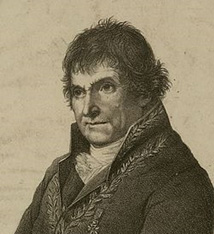
He was born on July 2, 1746 in Dijon, in the parish of Saint Pierre.
His father was a master glazier.
After attending the Dijon hospital, his mother sent him to Paris to continue his medical studies, and he enrolled at the Collège Royal de Chirurgie, where he attended regularly from 1765 to 1767, studying anatomy under Raphaël SABATIER and Jean-Joseph SUE.
At the same time, he was being introduced to surgery at de Lafaye's clinics and, in the afternoon, at Isaac GOURSAUD's.
His years as a surgeon came to an end in 1768, when he was awarded the title of Master of Surgery.
He married Jeanne CARRE, daughter and granddaughter of a master surgeon, on July 27, 1767 in Quetigny, Côte d'Or. Together they had a son, Bernard François Hector (1769-1837).
In 1769, he opened a free course in human and comparative anatomy, which was followed by many students for over ten years.
In 1774, the States of Burgundy had created a chemistry teaching program with Louis-Bernard GUYTON de MORVEAU as full professor and Hugues MARET and François CHAUSSIER as assistants. When MARET died in 1786, he was promoted to second professor of chemistry.
In Dijon, his professional qualities won him the favor of his clientele, and his reputation quickly spread beyond Burgundy. He made a name for himself at the Académie de Chirurgie with several communications, and was awarded the Académie's Gold Medal at the public session of April 10, 1777.
He was awarded his Doctorate in Medicine from the University of Besançon on January 14, 1780, and in 1784 became a correspondent of the Société Royale de Médecine. That same year, he was admitted to the Académie des Sciences, Arts et Belles-Lettres de Dijon, where he became Secretary General following Guyton de Morveau's retirement.
In 1785, at the request of the States of Burgundy, he published a popular instruction on rabid animal bites: "Méthode de traiter les morsures des animaux enragés, et de la vipère; suivie d'un précis sur la pustule maligne" (with Joseph Enaux 1726-1798).
In 1789, he published a study on the muscles of the human body, in which he proposed a more rational classification than that hitherto taught: "Exposition sommaire des muscles du corps humain suivant la classification et la nomenclature méthodiques adoptées au cours public d'anatomie de Dijon"; this work was republished in 1797.
On December 20, 1789, he read a paper for the Dijon Academy entitled "Observations chirurgico-légales sur un point important de la jurisprudence criminelle" (Surgical-legal observations on an important point of criminal jurisprudence), in which he demonstrated the role that physicians could play in enlightening the judiciary; this work was well received, and the following year he opened a course in Legal Medicine in Dijon.
On 3 nivôse an III (December 23, 1794), he married Angélique LABOREY in Dijon (Section du Crébillon), and they also had a son Franck Bernard Simon (1804-1866).
In 1794, Antoine-François Fourcroy was commissioned by the National Convention to reorganize medical education, and he sought out someone who could suggest the details of this organization. Claude-Antoine Prieur-Duvernois, from the Côte-d'Or, who was in charge of Science and Arts Education at the Comité de salut public, pointed him in the direction of François Chaussier, who joined the Comité de l'Instruction Publique: he drew up a report and a draft decree, which he read at the Convention on 7 frimaire de l'an III (November 27, 1794); in it, he proposed the creation of a single "Ecole centrale de Santé" in Paris; the members of the Convention, broadly open to decentralization, asked for the creation of other similar schools in Montpellier and Strasbourg, and it was on this basis that the report was adopted on 14 frimaire (December 4).
Chaussier returned to Dijon, where he resumed his courses and studies, as well as the missions he had been entrusted with: in April 1793, he had been appointed physician to the Dijon Hospices and Prison Surgeon; he did not remain there for long, however, as he was recalled to Paris to take up the chair of anatomy and physiology at the Ecole de Santé. Chaussier was, in the words of Joseph-Henri Réveillé-Parise, the most famous professor of physiology at the Ecole de Paris: he defended vitalism as the basis of all physiological studies.
A decree of 7 Vendémiaire An III (September 28, 1794) officially created the École Centrale des Travaux Publics, the future École Polytechnique, and less than a month after its opening, the Board of Governors proposed installing an infirmary and appointing a "health officer" (a revolutionary designation for doctors) to care for sick students and give lessons on "the art of preventing illness and alleviating it". The following year's list of Ecole Polytechnique staff includes him as assistant to Claude Louis Berthollet, "in charge of the Zootechnie and Salubrity course, and as the School's Physician": in fact, he taught Berthollet's course during his absence in Italy in 1796-1797. After the regularization of chemistry teaching, Chaussier seems to have abandoned the teaching of this science and confined himself almost entirely to his duties as physician.
In 1799, "Les tables synoptiques" was published to great acclaim. They provide a summary of the physiology, pathology and therapeutics of the various anatomical systems of the human body.
On May 9, 1804, he was appointed Hospice Physician at the Maternity Hospital, and was entrusted with the presidency of the medical juries for the Health Officer, Pharmacist and Midwife examinations for the district of the Paris Faculty of Medicine.
He was a member of the commission appointed by the Minister of the Interior in October 1810 to study "secret remedies", alongside André Marie Constant Duméril, Jean-Joseph Menuret and Nicolas Deyeux.
In 1815, after the fall of the First Empire, he was replaced as doctor at the Ecole Polytechnique, but he held his chair at the Faculty until November 21, 1822, when the Restoration changed the organization of the Faculty: he was named honorary professor and his chair was withdrawn. He was bitterly disappointed, and the next day suffered a stroke that temporarily left him unable to walk or talk. He recovered, however, but remained hemiplegic, which did not prevent him from continuing his work at the Maternity Hospital.
On May 6, 1823, he was admitted to theAcadémie des Sciences.
Between 1824 and 1827, he published several works on forensic medicine: "Manuel médico-légal des poisons, précédé de considérations sur l'empoisonnement" ("Forensic manual on poisons, preceded by considerations on poisoning").14Recueil de mémoires, consultations, et rapports sur divers objets de médecine légale" ("Collection of memoirs, consultations and reports on various subjects of forensic medicine")15Mémoire médico-légal sur la viabilité de l'enfant naissant, présenté à Mgr le garde des sceaux, ministre de la Justice" ("Forensic report on the viability of newborn babies, presented to the Minister of Justice")16
François Chaussier died of a stroke at his Paris home on June 19, 1828, aged 81.
He was buried in Père-Lachaise Cemetery (18th division) on June 21: Nicolas-Philibert Adelon delivered a speech on behalf of the Académie, Marie-Alexandre Désormaux, representing the Faculté, did the same, and Duméril, on behalf of the Académie Royale des Sciences, read a long eulogy.
Don2nd son, Franck CHAUSSIER followed in his father's footsteps, defending his doctoral thesis in Montpellier in 1827.
He is a French physician, professor at the Paris Faculty of Medicine, member of the Académie royale de médecine and the Académie des sciences.
Chaussier was the main editor of theEncyclopédie méthodique's articles on pharmacy.13.
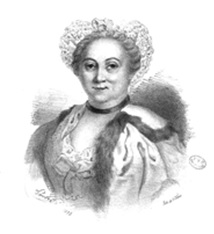
She was born in Clermont-Ferrand in 1712 into a family of doctors.
For three years, she was a pupil of Anne BAIRSIN, a master midwife.
In 1739, on September 26, she received her diploma and soon after became a sworn midwife.
She worked as a master midwife at Le Châtelet in Paris for sixteen years.
In 1752, to combine practice with theory, she published a book entitled "Abrégé de l'Art des accouchements".
In 1754, she returned to Auvergne and began giving free lessons.
In 1758, she designed her famous demonstration "machine" (made of wood, cardboard, cloth and cotton), which was approved on December1 by the French Academy of Surgery.
During the two-month training course, students were invited to practice on the mannequin.
She died in Bordeaux on April 16, 1794 at the age of 79, destitute and alone, her niece and husband being absent. There is a rue Angélique du Coudray in Thorigné-Fouillard and a rue Madame-du-Coudray in her native Clermont-Ferrand. The maternity ward at Melun hospital (77) also bears her name.
